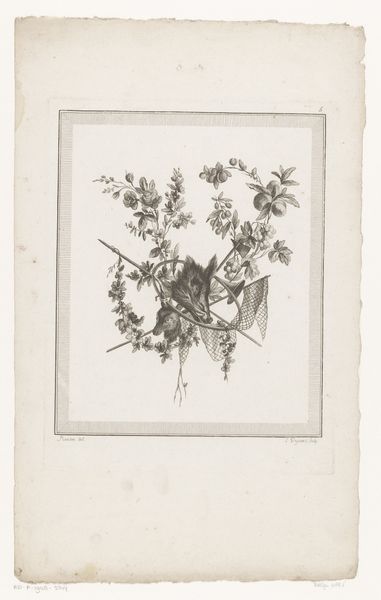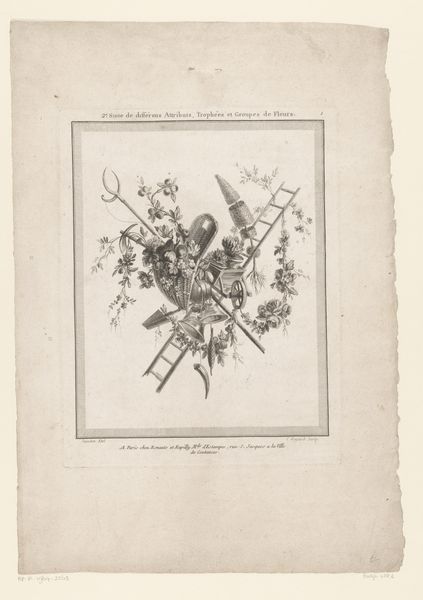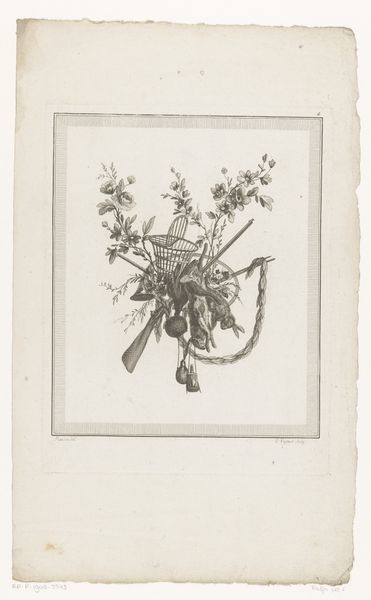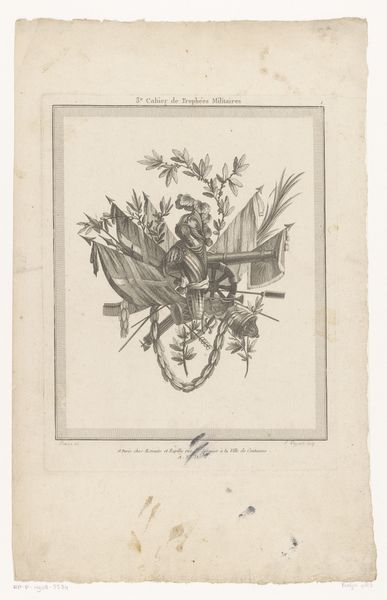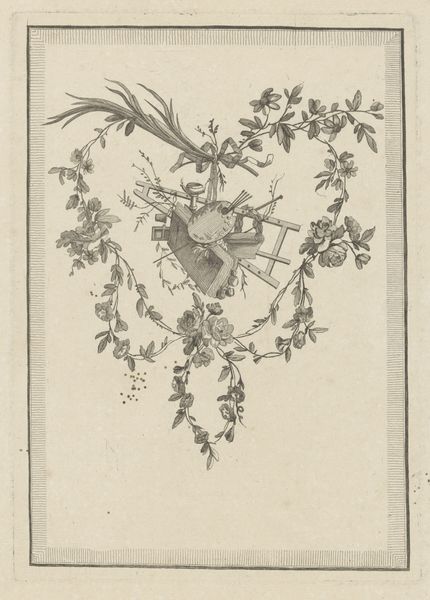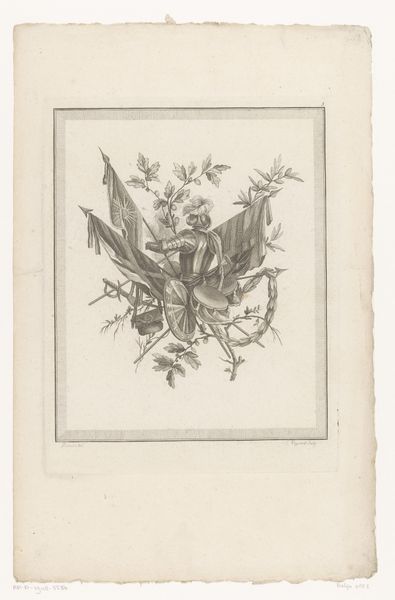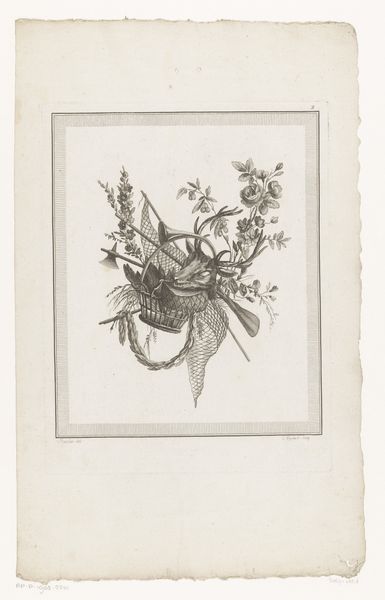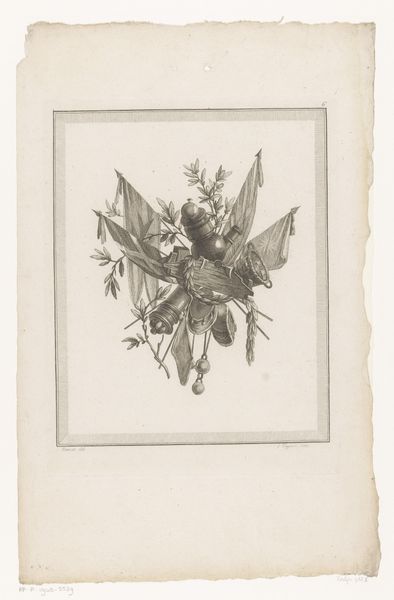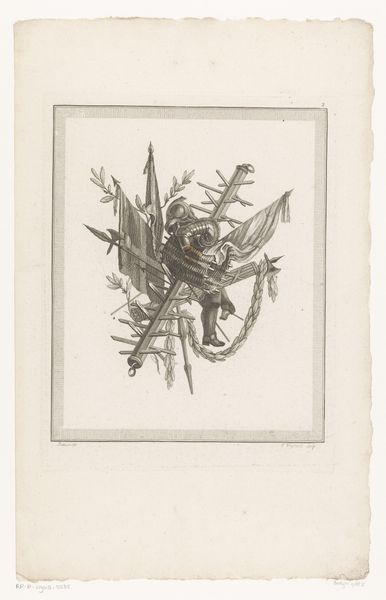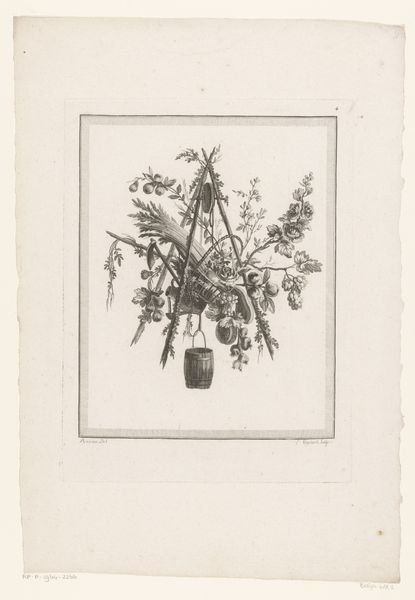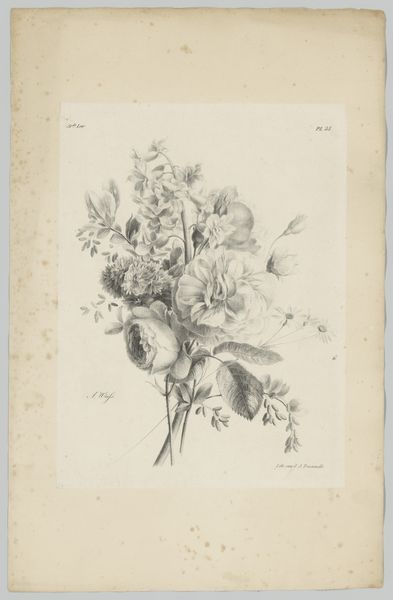
Dimensions: height 281 mm, width 220 mm
Copyright: Rijks Museum: Open Domain
Editor: This is "Jachttrofee," or "Hunting Trophy," an engraving from 1778 by Etienne Claude Voysard. The detail is incredible. It's filled with hunting paraphernalia intertwined with flora... there's a kind of... uneasy harmony here, perhaps? What strikes you most about this piece? Curator: For me, it’s how the materials used – the paper, the ink, the very act of engraving – participate in the socio-economic realities of 18th-century France. Consider the availability of paper at that time, the skills required for engraving... were they accessible to all, or just a privileged class? Editor: That’s a good point. It does seem rather… intricate to be widely available. How would that inform the reading of the artwork? Curator: Precisely! The engraving itself becomes a commodity, reflecting the societal values around luxury and perhaps even conquest represented by the hunting trophy itself. Who consumes it, and how does it reinforce existing power structures? What do the flora say about consumption, considering that not only animal life but also botany became an industry at this time? Editor: So, rather than simply depicting a scene, it’s actively involved in perpetuating ideas about class, access, and value? It isn't simply representational? Curator: Exactly. Consider the labour involved, the economic value imbued in the paper and ink, and then ask – how does its production and circulation reflect or challenge those broader material conditions of its time? The ‘hunting trophy’ depicted becomes less about the hunt itself, and more a reflection of a structured system of access to resources and artistic labour. Editor: Wow, I never thought about an engraving in those terms before. That makes me think differently about everything, not just this print! Curator: Wonderful. Thinking about art as part of an overall, material condition is what will keep this and you thriving!
Comments
No comments
Be the first to comment and join the conversation on the ultimate creative platform.
